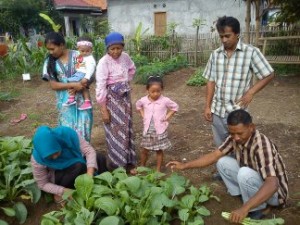
One of under five mortality causes is weak disease resistance caused by mulnutrition. Our investigation prior to the project found the rate of malnutirition children was 6.3% and mothers had hardly any knowledge on nutrition. Since the project provided nutritious meals, nutrition counseling and nutritious menu contest, the rate was reduced to 1.5% in three years. From the three year project, we confirmed that the health problem is caused by local eating habits not concerned with nutrition balance. We also confirmed that it is not possible to supply foodstuff to villagers forever even using locally available inexpensive materials. It is necessary for the villagers themselves to improve their daily diet at home to more nutritious ones and continue such efforts. So PHJ is providing education covering basic knowledge of nutrition and how to prepare nutritious food to villagers.
Activities
Development of Nutritious Food Menu
Important factors are to use locally available and inexpensive food materials, that contain nutrition elements required for growth of infants (animal and vegetable protein, calcium, iron, Vitamin A, B1, B6, B12, C, and D), and that children love to eat. Menu contest is organized by villagers, and women take responsibility of cooking and distribution of meals. Since the start of the project, more than 100 menus have been developed.
Establishment of Nutrition Center
Since 2010, PHJ is extending nutrition education to mothers and women emphasizing the importance of daily meals to children’s health. To meet the expanded education program, PHJ established a Nutrition Center within a clinic as the education headquarters in the Tirtayasa autonomous district. PHJ is happy to receive compliments such as “the number of mulnutrition children has decreased significantly and we see many healthy energetic children around.” (2004 6.3%→2006 1.5%→2010 0.13%)
Vegetable Garden
Villagers are growing vegetables to consume by themselves.
